
Star Trek Into Darkness
2013
Director JJ Abrams
Production Designer Scott Chambliss
Studio Universal Studios
Employer OOOii
Role Lead Interface Designer and Animator I oversaw the completion of all user interfaces for OOOii during production and post-production. I designed most of the UI seen in the film. Along with Rudy Vessup, we animated and prepared almost all of the UI for the film.
Team
Rudy Vessup Designer/Animator from Pre-Production through Post-Production
Blaise Hossain Post-Production Design and Animation
Paul Luna Animation for Kronos Alien Ship UI
Tools
Adobe Photoshop, Illustrator, and After Effects. Additional 3D elements provided to me were created using Maya and/or Cinema 4d.
Volcano Sequence
Spock is lowered into the pit of an active volcano, where he activates an explosive device that will extinguish the eruption. Spock becomes stranded, and the crew must rescue him. This sequence featured user interfaces on the Enterpise Shuttle, the explosive device, as well as the Enterprise Viewscreen.
SHUTTLE INTERFACE
![]()
![]()
Detonation Device Interface
Final Design and Animation: Rudy Vessup
![]()
This was the first viewscreen I designed, and the development process went a long way towards defining the final look of the interface throughout the film. I knew I wanted the viewscreen to feel more structured than the desktop interfaces seen on the ship. I thought it would be interesting to incorporate the glass panels elements we used previously as framing elements for the viewscreen. They would disply widgets of diagnostic data that the Captain could expand and explore when needed.
Production sent us a 3d model of the volcano, which was rendered by Rudy Vessup. I imported the elements into After Effects, where I added animation and dialed in the final look.
![]()
![]()
![]()
![]()
![]()
![]()
![]()
![]()
![]()


Detonation Device Interface
Final Design and Animation: Rudy Vessup

Viewscreen Interface
This was the first viewscreen interface seen in the film. The purpose was to show the location of a detonation device within an active volcano. There was also a separate graphic intended to monitor the health of Spock, who was planting the device. I began with thumbnail sketches, then started laying in a rough design in photoshop.This was the first viewscreen I designed, and the development process went a long way towards defining the final look of the interface throughout the film. I knew I wanted the viewscreen to feel more structured than the desktop interfaces seen on the ship. I thought it would be interesting to incorporate the glass panels elements we used previously as framing elements for the viewscreen. They would disply widgets of diagnostic data that the Captain could expand and explore when needed.
Production sent us a 3d model of the volcano, which was rendered by Rudy Vessup. I imported the elements into After Effects, where I added animation and dialed in the final look.


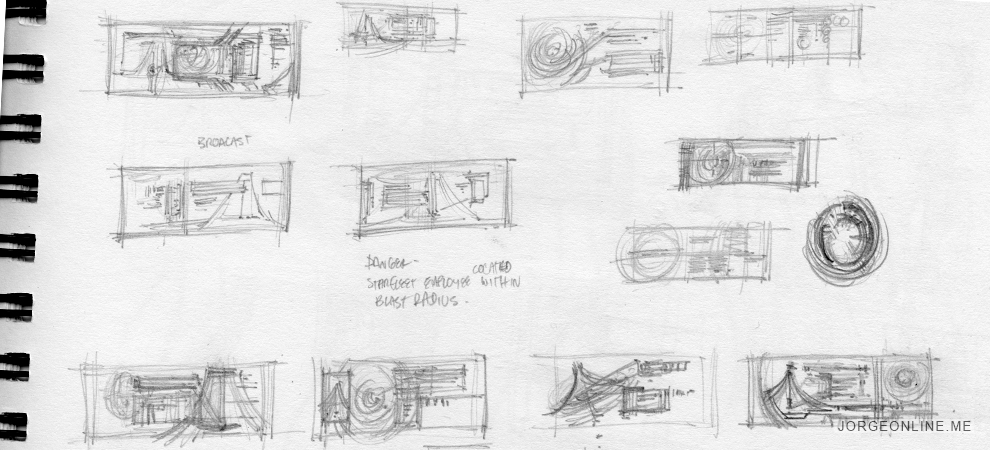






Ship to Ship Spacejump Sequence
Kirk and Khan are launched from the Starship Enterprise to the Starship Vengeance. They must navigate through a sea of spaceship debris along the way.This was the longest and most complex storytelling sequence we had to work on. It required user interfaces for the Enterprise viewscreen, a glass panel display used by Bones, Sulu’s navigation interface, and a helmet heads-up display used by Kirk and Khan.
This sequence was created entirely by myself and Rudy Vessup.

Sulu’s Monitor


Viewscreen Interface


EARLY DESIGNS




Bones’ Glass Interface
This was a quick but dynamic shot through glass. Rudy and I saw it as an opportunity to do something unique. My idea was to treat the main elements (the target ship and pilot trajectories) as a 3d hologram that could only be seen through the glass, so that as the camera panned from behind the glass around to the front, the hologram would change perspective. Unfortunately, the final shot was shortened so the effect was minimized. 


Helmet Heads-Up Display
Kirk and Khan are launched from the Starship Enterprise to the Starship Vengeance. They must navigate through a sea of spaceship debris along the way.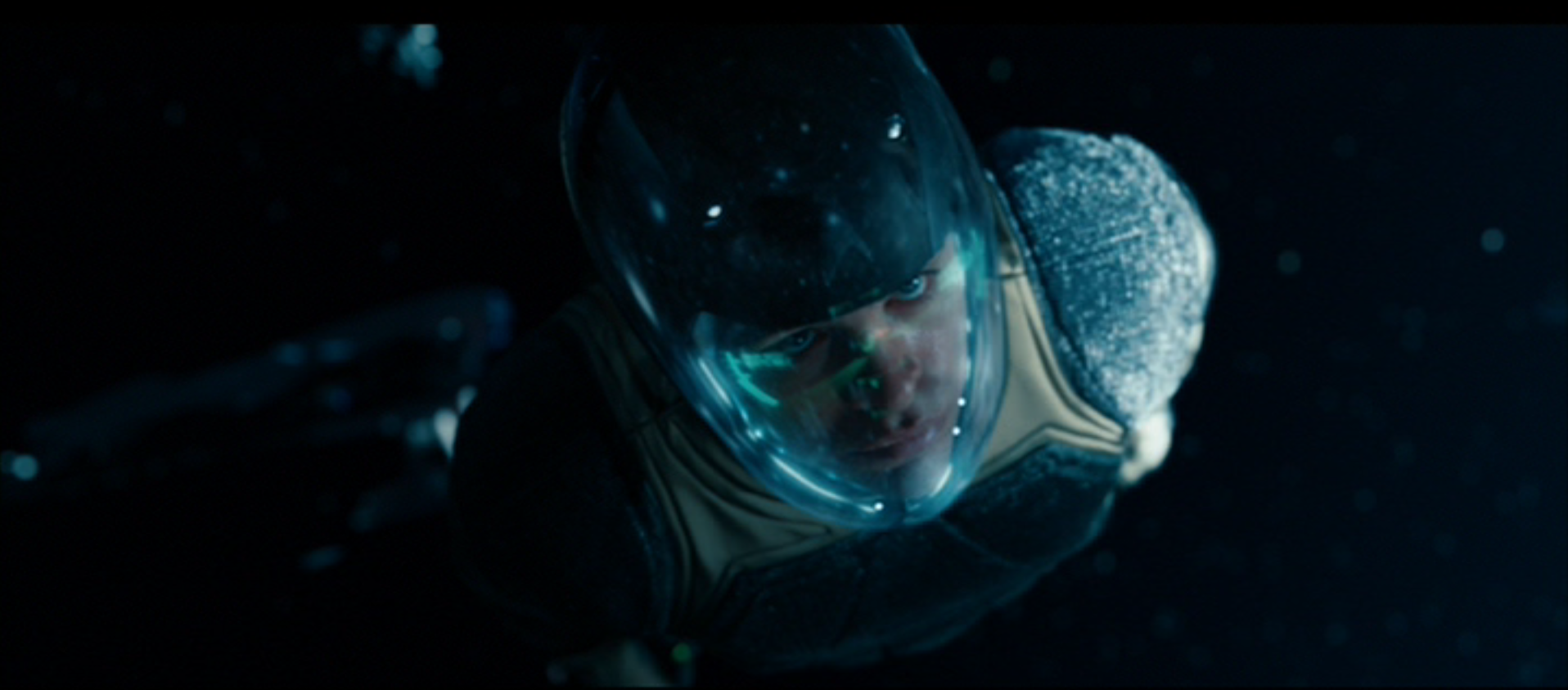
Early Designs









Final Shots



Enterprise Viewscreens
The Starship Enterprise viewscreen was the largest and most complex user interface used by the characters. It was featured much more prominently in this film than in the first one.Aside from the featured animations, we also provided ILM with a collection of generic animations which they used accent any non-hero shots where the viewscreen was visible in the background.

Planetoid Sequence
Final Design and Animation: Rudy Vessup



Kronos Sequence
Final Design and Animation: Blaise Hossain

Warp Speed Interface

Other Viewscreens
Final Design and Animation: Blaise Hossain

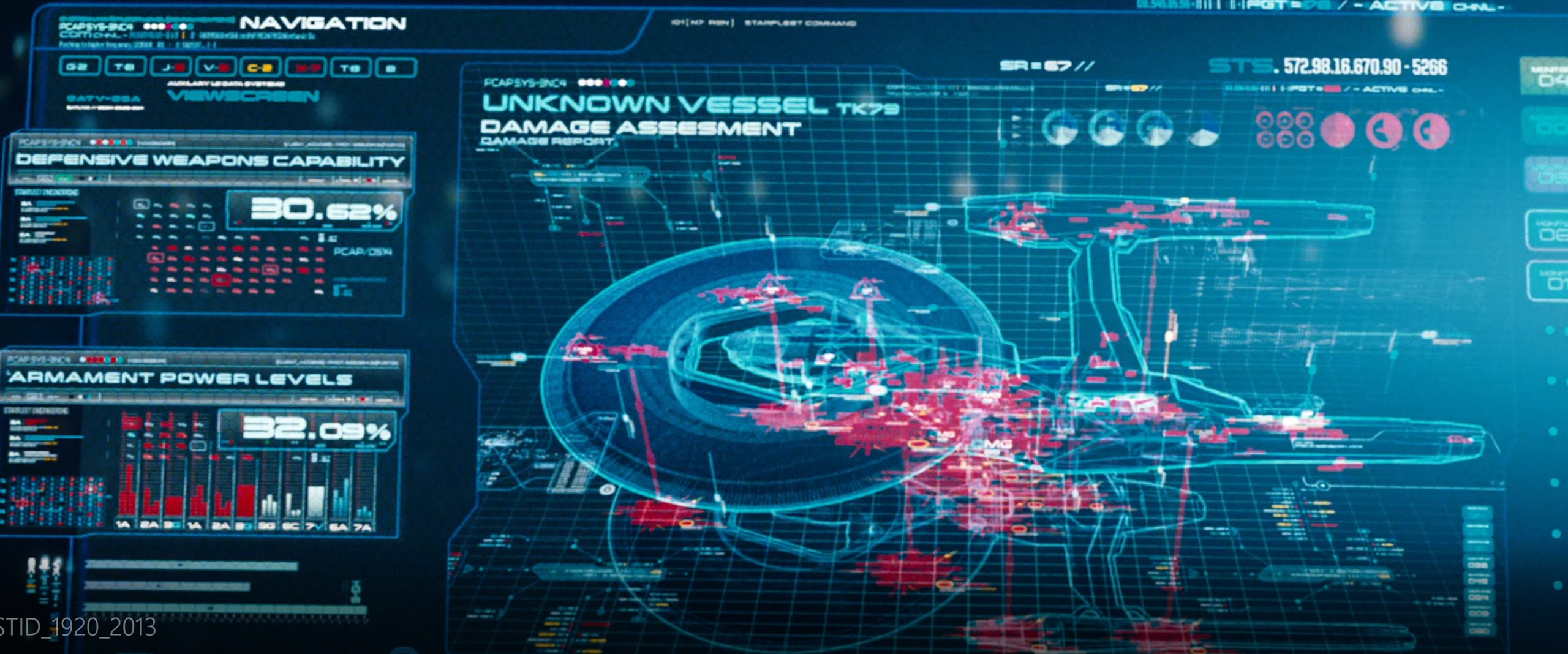

Vengeance Crash Sequence
Final Design and Animation: Rudy Vessup



Admiral Marcus Call
Rough Composite

Other Enterprise Interfaces








Starship Vengeance
The Starship Vengeance was an advanced military ship piloted by Admiral Marcus and later hijacked by Khan. It was originally going to be an entirely original set design with a open floors and a mixture of vertical and landscape crew interfaces.Later during production it was determined that, rather than build an original set, they would simply repurpose the Starship Enterprise set by painting it black and adding some lighting and props. For this reason, early concepts feature a dark blue and lemon yellow color scheme, while finals were more black and white. I wasn’t crazy about all of the animations I built, but since they were background I think the overall effect still worked.
I was directed to design the on-set interfaces to be more abstract with minimal text, similar to the Enterprise monitors.


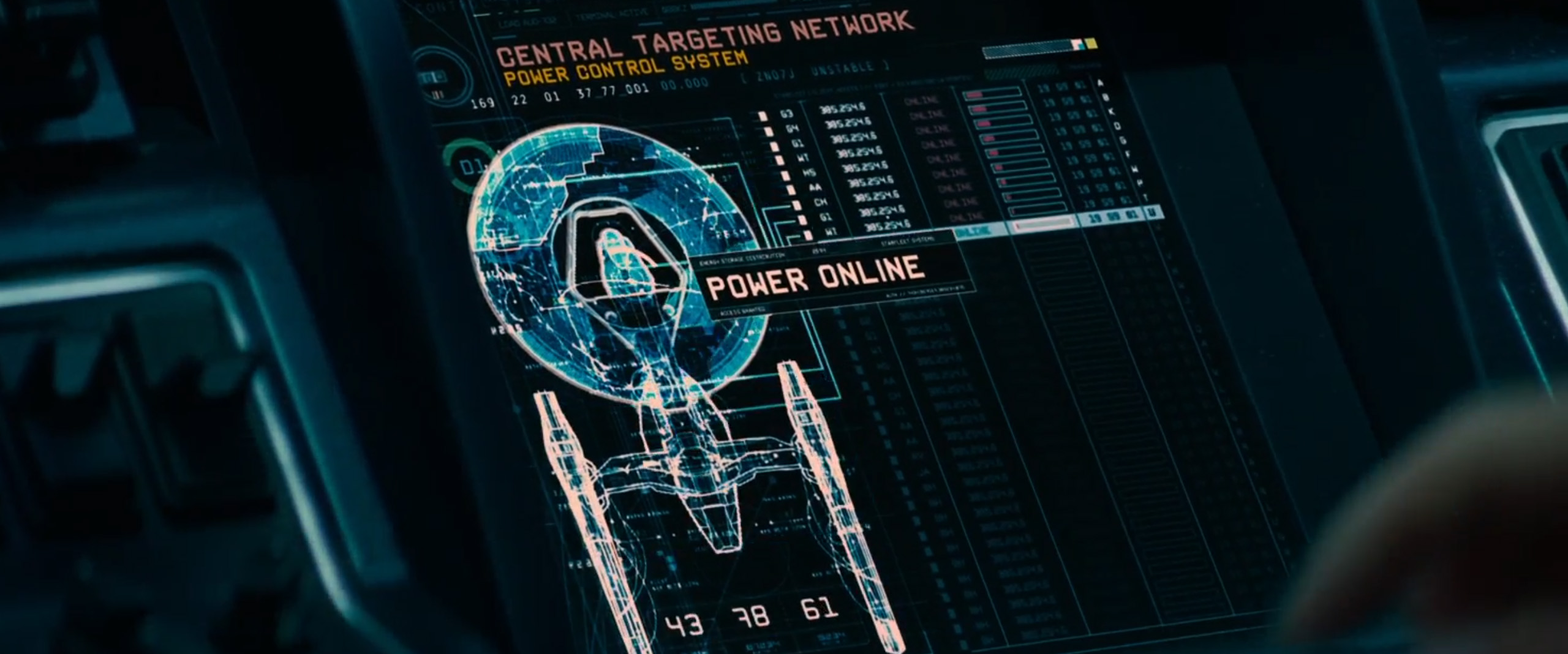










Early Concepts
![]()










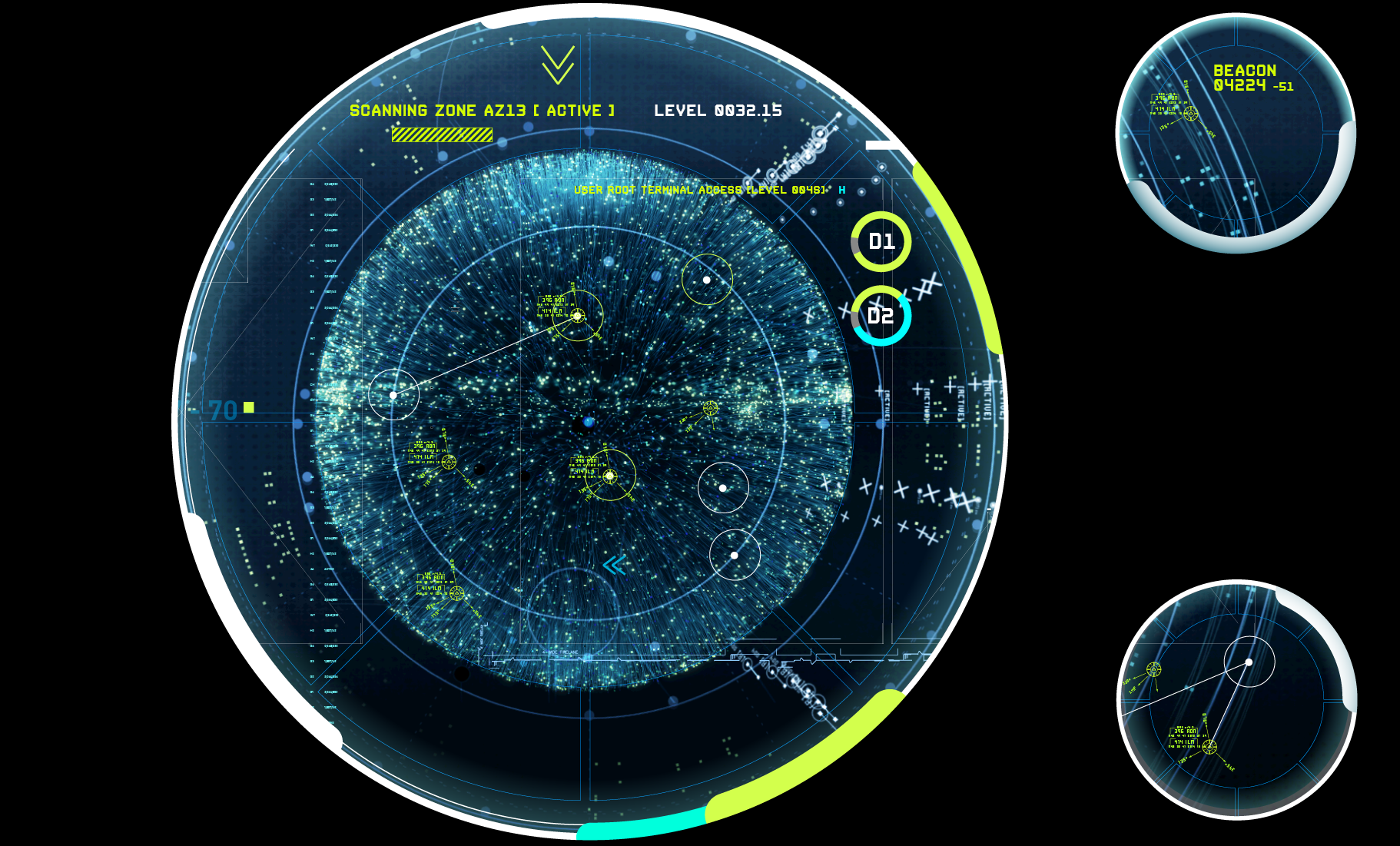


Finals






360 Radar Screen
The 360 radar screen was a series of monitors that wrapped around the cockpit and provided a graphic window to the ships surroundings. The final animation was built for playback on-set during production.Since the 360 radar was so visible in the Enterprise during the first film, I spent a decent amount of time creating this animation. Rather than a typical pulsing radar graphic, I wanted the interface to feel like waves in the ocean. Unfortunately, the monitors were lit with direct light, so much of the detail was lost in the final shots.

EARLY DESIGNS




Concept Animation
Finals


Final Animation
These are two of the four animations that played on set.
Emergency Red-Alert Designs



Starship Vengeance Viewscreen
Since they were both Federation ships, I tried to incorpororate some of the style from the Enterprise viewscreen into the established style of the Vengeance. I repurposed the glass panels, and reshaped them so they appeared more orderly and monochromatic. The right side of the viewscreen was less developed because I knew it would not be visible in the final shots.Production provided us with a 3d models of the Enterprise and the torpedo. The models were animated and rendered for me. I created the graphics in Illustrator and animated the entire sequence in After Effects. I then rendered and sent the animation to ILM for the final composite.



Hospital Diagnostic Interface
Final Design and Animation Rudy Vessup
EARLY ROUGH CONCEPT



Conference Room Presentation
Final Design and Animation Rudy Vessup


Factory Interface
EARLY DESIGN
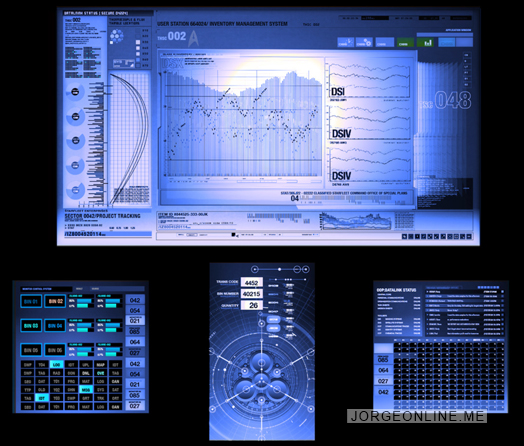



Kronos Alien Ship
When the cosmos wakes, if ever she does, she will find herself not the single beloved of her maker, but merely a little bubble adrift on the boundless and bottomless ocean of being.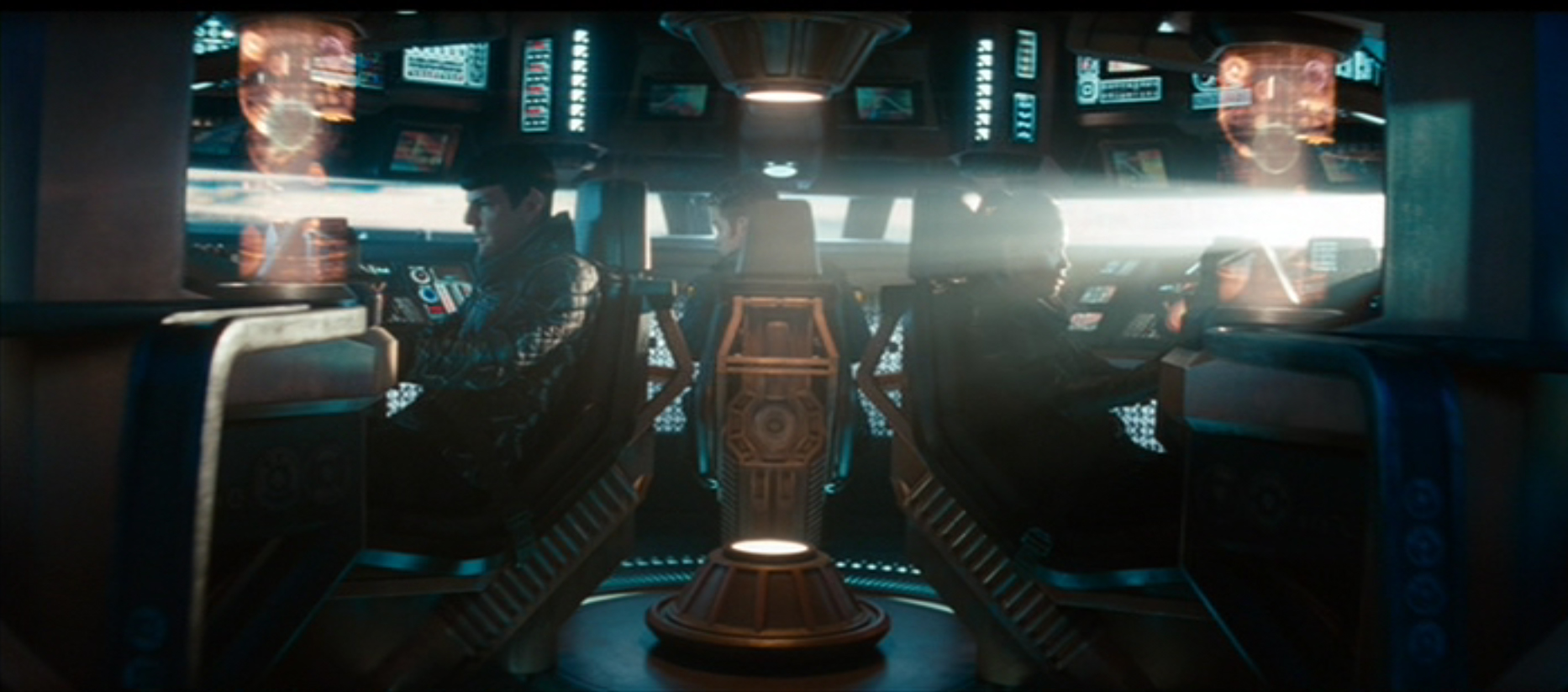



Other User Interfaces









Not Used
These are interfaces that were cut from the final version of film.Admiral Marcus Desktop Interface
This is a rough composite I created for a cut scene where Admiral Marcus communicates with a man who is about to detonate a bomb. 
Admiral Marcus Power Wall
This interface was set in Admiral Marcus’ office. It was refered to as the “power wall” and would allow Marcus to observe all activity
and military operations currently underway in the galaxy.
ROUGH DESIGN

Eye Scan Graphics
Final Design and Animation Rudy Vessup

Galactic Map
This was originally to be used to display Khan’s flightpath from Earth to Kronos. I created this using Adobe Illustrator and After Effects.
Bar Menu
These are some early designs for a playful bar menu hologram. Production provided me with video of floating cocktails, and I created surrounding graphics and put together rough animations in After Effects.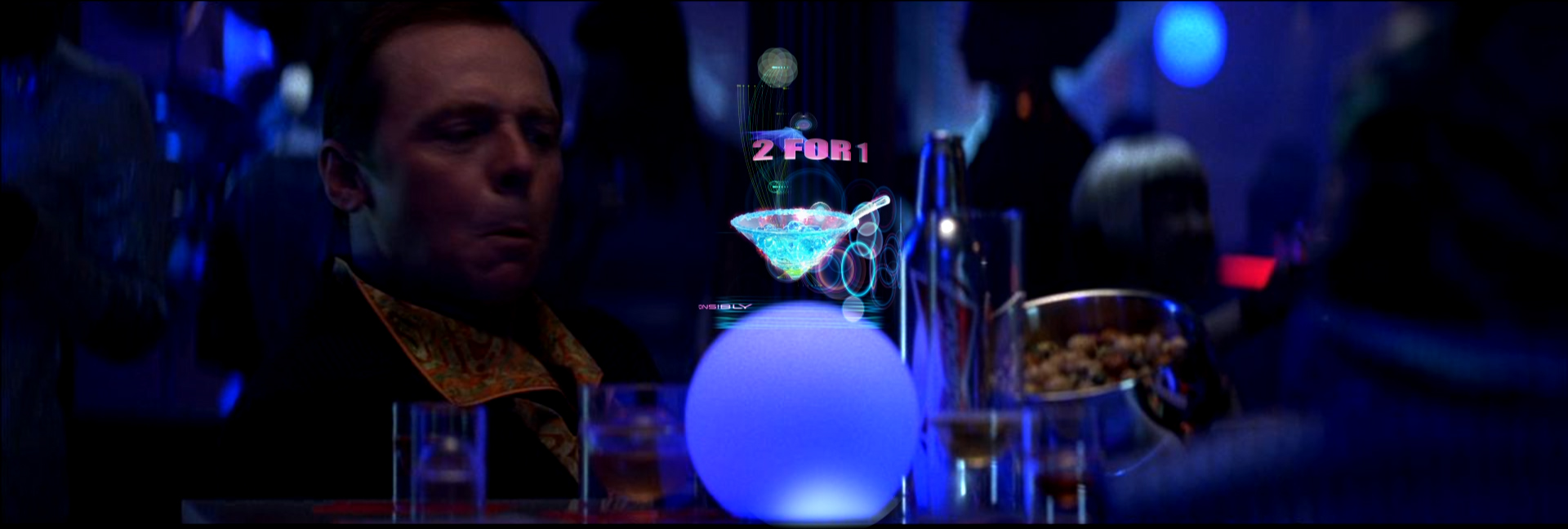

Kirk’s Alarm Clock
These were some early designs for Kirk’s alarm clock The prop had 3 small screens with circular speakers on either side.
